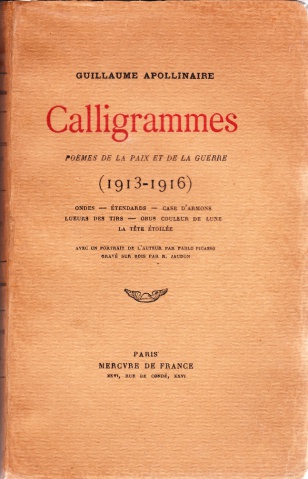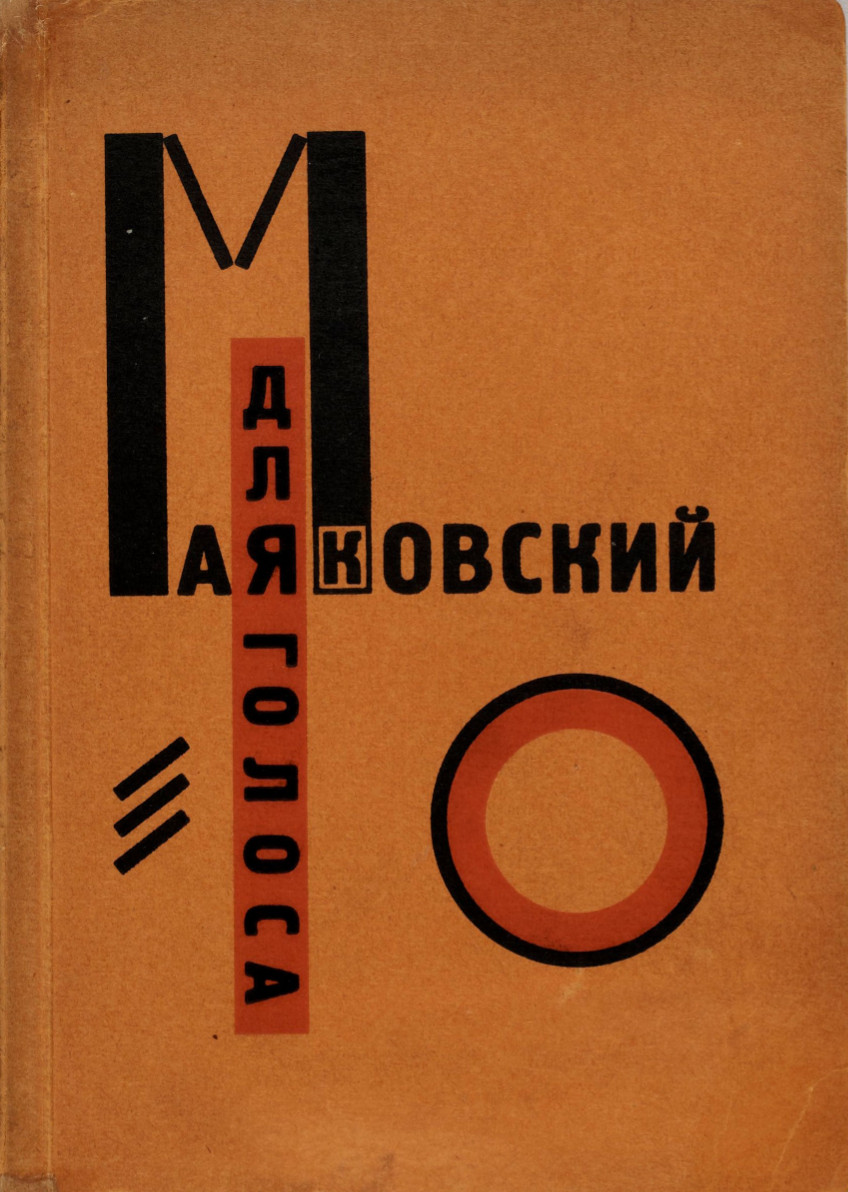Guillaume Apollinaire: Calligrammes: Poems of Peace and War, 1913–1916 (1918–) [FR, CZ, RU, EN, ES]
Filed under poetry | Tags: · concrete poetry, poetry, typography, visual poetry

Calligrammes is a key work not only in Apollinaire’s own development but in the evolution of modern French poetry. Apollinaire–Roman by birth, Polish by name (Wilhelm-Apollinaris de Kostrowitski), Parisian by choice–died at thirty-eight in 1918. Nevertheless, he became one of the leading figures in twentieth-century poetry, a transitional figure whose work at once echoes the Symbolists and anticipates the work of the Surrealists.
Apollinaire described calligrams as “an idealisation of free verse poetry and typographical precision in an era when typography is reaching a brilliant end to its career, at the dawn of the new means of reproduction that are the cinema and the phonograph.” (from a letter to André Billy, quoted in a preface to the 1966 French edition by Michel Butor)
French edition
With a portrait of the author by Pablo Picasso
Publisher Mercvre de France, Paris, 1918
205 pages
English/French bilingual edition
Translated by Anne Hyde Greet
With an Introduction by S.I. Lockerbie
Commentary by Anne Hyde Greet and S.I. Lockerbie
Publisher University of California Press, 1980
ISBN 0520242122, 9780520242128
513 pages
Apollinaire in UbuWeb Sound
Wikipedia (EN)
Publisher (EN)
Calligrammes, poèmes de la paix et de la guerre 1913-1916 (via Gallica.BNF.fr)
Kaligramy (Czech, trans. Karel and Miloslav Baláš, 1948, incomplete)
Stikhi (includes “Kalligrammy”, pp 99-150, Russian, trans. M. Koudinov, 1967, DJVU)
Calligrammes: Poems of Peace and War (1913-1916) (English/French, trans. Anne Hyde Greet, 1980, from UbuWeb)
Kalligrammy. Stikhotvoreniya mira i voyny 1913-1916 (Russian, 1999, TXT)
Caligramas: Poemas de la paz y de la guerra (1913-1916) (Spanish, trans. José Ignacio Velazquez, 1987, selection)
Idéogrammes (Spanish translation of Et moi aussi je suis peintre by Jorge Segovia, 2012)
Vasily Kamensky: Tango With Cows: Ferro-Concrete Poems (1914) [Russian]
Filed under artist publishing | Tags: · concrete poetry, cubo-futurism, futurism, poetry, typography, visual poetry
Tango With Cows is an artists’ book by the Russian futurist poet Vasily Kamensky, with three drawings by the brothers David and Vladimir Burliuk. Printed in an edition of 300, the work has become famous primarily for being made entirely of commercially produced wallpaper, with a series of concrete poems – visual poems that employ unusual typographic layouts for expressive effect – printed onto the recto of each page.
Beginning with a drawing by Vladimir Burliuk of a woman, the poems are split into two sections; the first contains 8 concrete poems that use multiple fonts and unusual spacings to express sounds and textures. Telephone, for instance, starts with ‘Telephone No. 2B_128 / rgrgrrrrrr______rrg’. The second group of 6 are arranged within diagonal grids, that evoke both the cubist paintings of Picasso and Braque, and the moulds that are used to make reinforced concrete. These poems refer directly to aerial views, maps and floor-plans. (from Wikipedia)
Tango s korovami: zhelezobetonnye poemy [Танго С Коровами: Железобетонныя Поэмы]
Published in Moscow, 1914
36 pages
via Archive.org
PDF
PDF (single-page PDF of a volume bound in a slightly different order)
Eduardo Kac’s translation of the poem “Telephone”
TangoWithCows.com, a project to translate the book into English (forthcoming mid-2014)
Vladimir Mayakovsky, El Lissitzky: Dlia golosa (1923) [Russian]
Filed under artist publishing | Tags: · avant-garde, constructivism, graphic design, poetry, typography

Dlia golosa [For the Voice], a collection of 13 poems by Mayakovsky, “constructed” by Lissitzky, has long been recognized as one of the finest achievements of Russian avant-garde bookmaking, a tradition in which poets and artists collaborated to create books that attained the status of art objects. By any reckoning, For the Voice is a landmark event in the history of modern graphic design. The book was inspired by the “new optics,” where ideas are given form through printed letters, turning them into pictorial signs, and by “words that are seen and not heard,” as Lissitzky wrote.
Для голоса [Dlia golosa]
Publisher R.S.F.S.R. Gosudarstvennoe Izdatel’stvo, Berlin, 1923
61 pages
via babs71
PDF (pages 14-15 are missing)
Comment (0)

